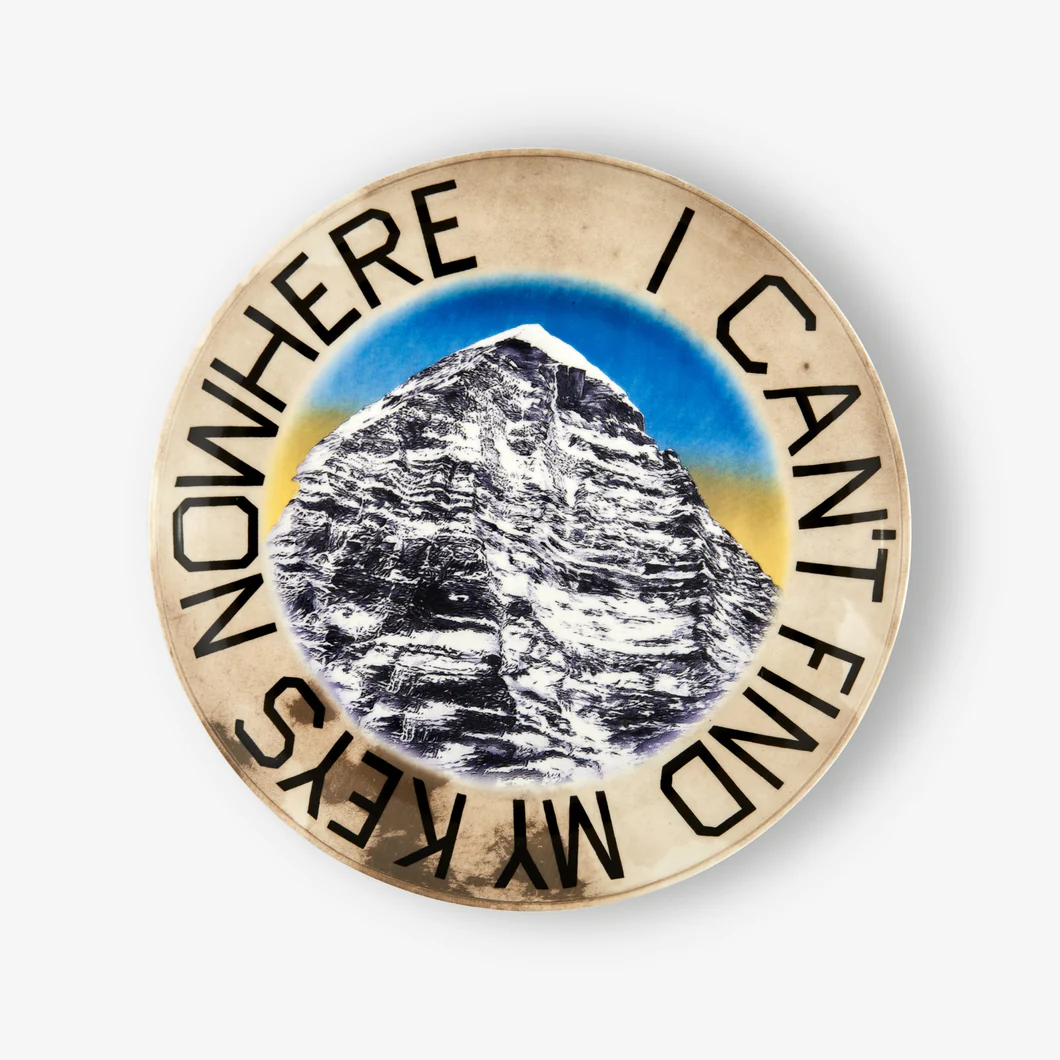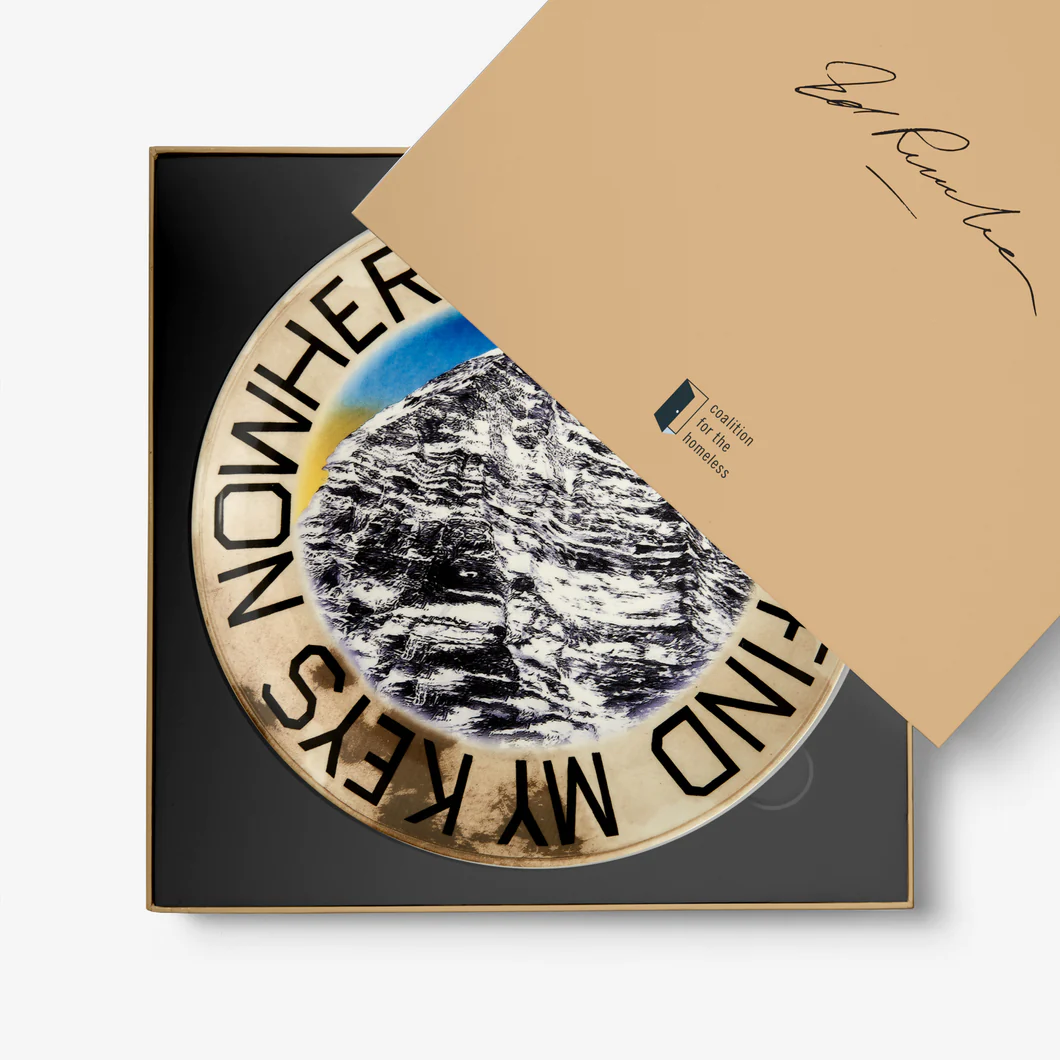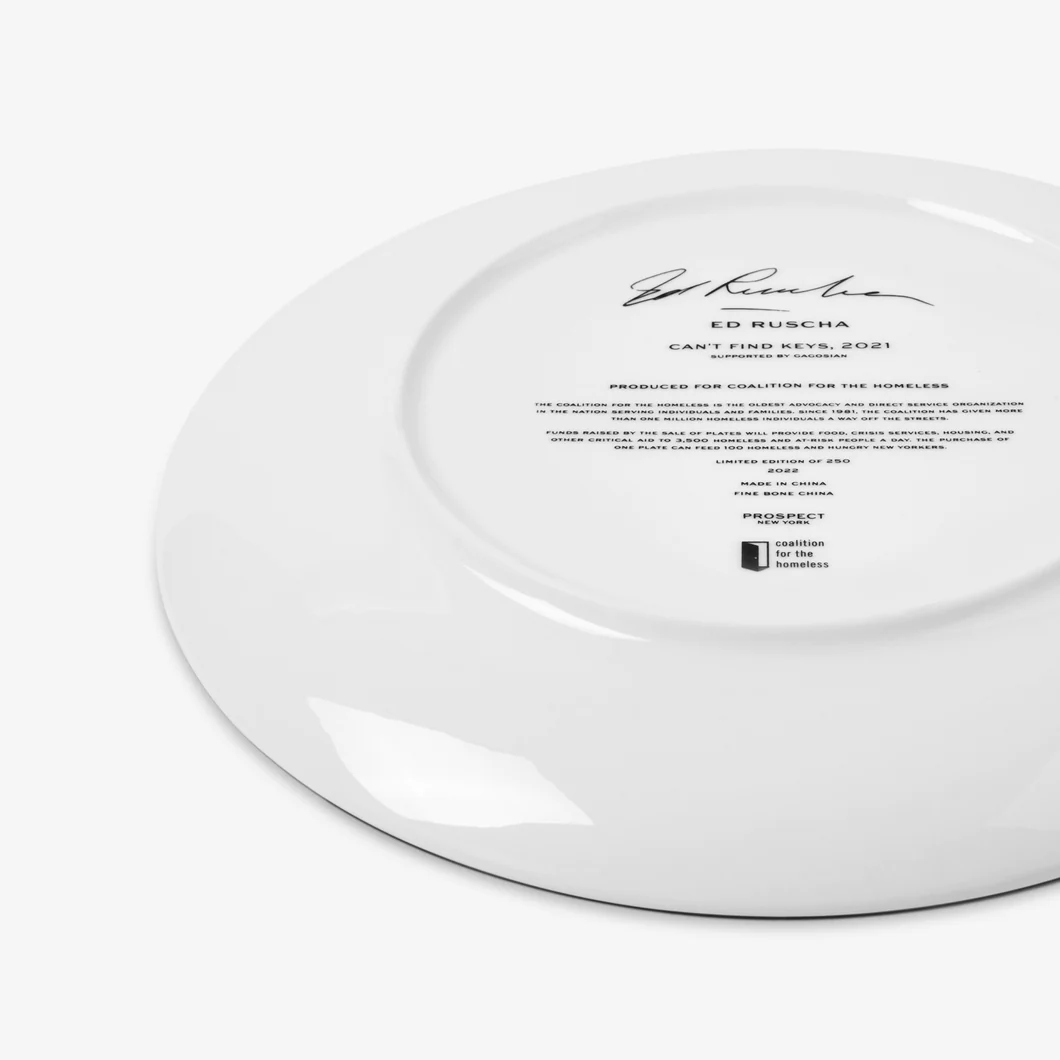Ed Ruscha
Auction Ended
Ed Ruscha
Can’t Find Keys, 2021 (Supported by Gagosian)
Fine bone china with custom box; Dishwasher and microwave safe
Printed signature and edition details on verso
10 1/2 in. (26.7 cm) diameter
This work is from an edition of 250
Produced by Prospect for Artware Editions
Provenance:
Artware Editions
Private collection, New York
Estimate: $3,000-4,000
Item condition: New
Once, when asked about the abundance of text in his work, Ed Ruscha explained, “I just happened to paint words like someone else paints flowers.”1 Indeed, language remains the artist’s most consistent subject, one whose form and meaning he has continuously explored over more than six decades.
In 1961, one year after completing his studies at the Chouinard Art Institute (now CalArts) in Los Angeles, where he had initially enrolled as a commercial art student, Ruscha spent several months traveling through Europe. For Zone, produced while he was in Paris, Ruscha placed a found scrap of paper, shaped vaguely like a US state, under the work’s evenly spaced title. It captures not only his interest in the collages of Kurt Schwitters, particularly the German artist’s use of discarded materials, but also the influence of his apprenticeship at a small press, where he learned to handset type, in 1958.
While Ruscha was initially drawn to language through printed matter, such as magazines, comics, and newspapers, he would exploit the elastic scale of words—their “no-size”2 quality—in order to monumentalize them through painting. Commercial logos, onomatopoeias, or guttural sounds became the focal point of compositions in the early 1960s. The bold and precise lettering in paintings such as OOF reveals his attentiveness to typography, just as the chosen text highlights the embodied nature of language: both its impression of a gut punch and our tendency to sound it out.
The sonic aspect of language fueled other developments in Ruscha’s work. His fondness for “the sound of the number 26”3 led to the conceptualization of his first artist’s book, Twentysix Gasoline Stations. Its title dictated its straightforward premise: 26 snapshots of gasoline stations encountered while on the road between Los Angeles and his hometown of Oklahoma City. In a move typical for Ruscha, whose motifs often migrate across mediums, one of the Texas gas stations became the subject of a large painting and several prints. Standard Station, for instance, depicts this example of roadside architecture against a vibrant gradated sky, the outsized brand name transforming the structure into signage.
Ruscha continued to investigate the materiality of language through both illusionistic and literal means. The letters in Rancho appear to have spontaneously cohered from a viscous puddle, while those in his monumental drawing Spread were formed with tobacco and rendered backwards on the verso, as if seeping through the paper. Ruscha would often swap oil paint and graphite for organic and unconventional materials such as blackberry juice, chocolate, egg yolk, shellac, and gunpowder in order to experiment with the legibility and permanence of letter forms—often interfering with their potential to communicate, both in the present and into the future.
In the 1970s, Ruscha began piecing words together into evocative statements that were often overheard in conversation or on the radio and puzzlingly decontextualized. His pastel Thick Blocks of Musical Fudge, for instance, conjures vivid and surreal images (chocolate piano keys come to mind). Borrowing from the language of cinema, The End reproduces the closing title card of a black-and-white film, luxuriating in the scratches and flaws inherent to this medium. The two short words capture that familiar moment when the score swells and the viewer is dropped from the suspended fantasy back into the reality of their theater seat.
(Taken from MoMA.org)
Auction History
Auction has finished
Auction failed because there were no bids| November 8, 2023 8:02 am | Auction started | ||



